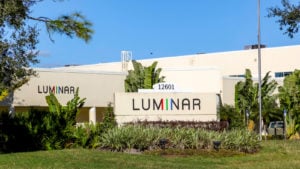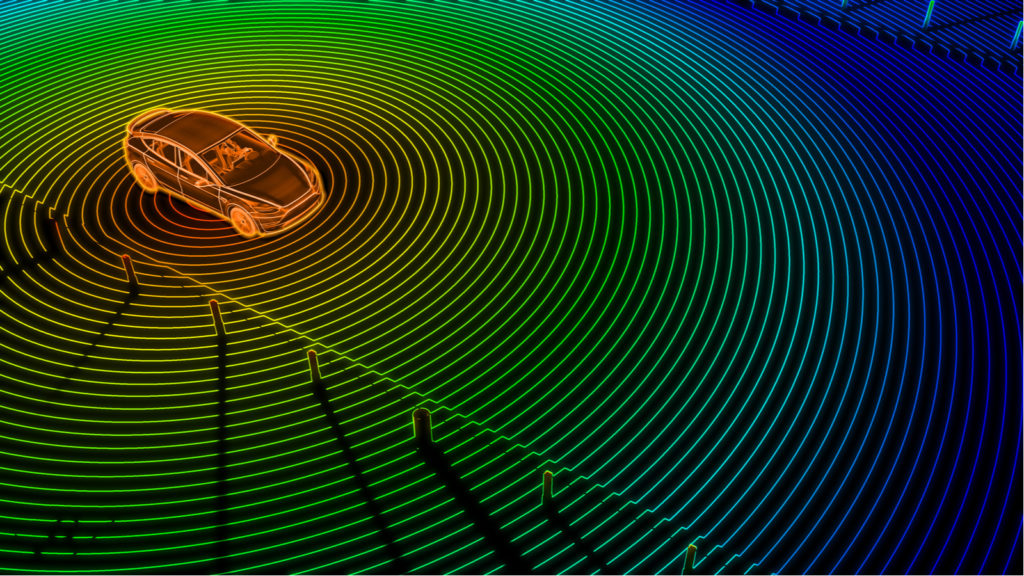Germany’s biggest auto show, IAA Mobility, took place last week in Munich. For investors interested in all things electric, IAA — one of the first major motor industry events since the pandemic — was a coming out party and source for the latest buzz. This year’s event showcased mobility in general, from bikes to e-scooters to three- and four-wheeled vehicles. But what’s really getting everyone’s attention is what’s developing under the hood: automotive lidar (light detection and ranging). IAA is just the latest happening to bring lidar stocks to the forefront.
As frequent InvestorPlace readers may know, I’m excited about lidar as a potential game-changer in advancing autonomous driving (AD) and advanced driver-assistance systems (ADAS). In fact, the technology has already been chosen by almost every major car manufacturer except for one: Tesla (NASDAQ:TSLA). But with that electric vehicle (EV) giant now reeling from a recent safety probe, lidar companies have leveraged the opportunity to show just how their tech can avoid accidents.
If we listen to what the market’s telling us, it’s way too early for lidar stocks. In fact, the whole group is skidding, with previous high-flyers like Luminar and Innoviz down more than 50% year-to-date (YTD).
To be fair, this still a nascent market. It will take years to develop. Like any technology that relies on network processing and optics, the cost of lidar sensors needs to come down before we see viable commercial adoption. In the meantime, every lidar company is operating at a loss while working hard to scale manufacturing. Revenues and earnings are largely non-existent (for now) — a combination that’s catnip for short sellers.
That’s the short-term picture. But like many tech trends early in the cycle, good things come to those who wait. After all, the long-term push toward autonomy and intelligent automotive safety features is clear. For example, check out the bidding war between Magna (NYSE:MGA) and Qualcomm (NASDAQ:QCOM) for ADAS software-maker Veoneer (NYSE:VNE).
My take? The recent pullback in lidar stocks provides an excellent opportunity for patient technology investors willing to do some diligence. So, who’s really got the lead on high performance lidar that’s ready for automotive grade series production? Well, the answer isn’t obvious.
Like all things tech, there are usually several different ways to skin a cat. Lidar is no different; almost every company boasts the competitive advantages of its unique architecture. Even for lidar evangelists, getting to the bottom of which company is best positioned requires sorting through an acronym soup — everything from arrays, to MEMs (micro-electro-mechanical systems) and FMCW (frequency-modulated continuous wave) technologies.
But here’s a place to start. Read on for an IAA update from three of my favorite lidar stocks at the show.
Lidar Stocks to Buy: Microvision (MVIS)

Following up the release of its A-sample hardware in April, Microvision showcased a big reveal of its family of sensors. The company also showed several live demos and track testing pictures at IAA.
Microvision has claimed the company’s technology is best-in-class. Yet, when it comes to differentiating performance, investors won’t find easy answers. There aren’t uniform specs for “apples-to-apples” comparisons. There isn’t really any uniform, independent testing. Most vendors cherry-pick their best technology features. And despite several invitations to host the company for a Fireside Chat with InvestorPlace readers, the company seems to prefer secrecy for now. That said, chatter from the show centered around Microvision’s custom ASICs, small form relative to competitors and immunity to bright sunlight (a common problem for lidars).
As frequent InvestorPlace readers know, I like MVIS stock because it’s both a lidar and augmented reality (AR) play. There’s speculation that the company could be getting closer to a win for its MicroHUD system for windshield displays in vehicles, AR and even surgical applications. In particular, there’s an interesting trail of activity at two companies which have MVIS ties: Magna and Sharp-Foxconn. Notably, Magna was awarded a patent which references MicroHUD technology. Additionally, EV maker Fisker (NYSE:FSR) — which is working with Sharp — could begin deploying the tech in its vehicles as part of this relationship.
There’s also considerable speculation that Microvision could be getting closer to generating royalties from Microsoft (NASDAQ:MSFT), which is building IVAS (integrated visual augmentation system) devices for the U.S. Army based on it’s HoloLens augmented reality headset. (The HoloLens is an AR visor system that allows soldiers to have a video game-style heads up display over what they see in real life.)
Finally, on the company’s second-quarter earnings call, CEO Sumit Sharma confirmed that Microvision’s tech is used in the Hololens 2. This is thanks in part to InvestorPlace readers who pushed for answers as well as several photos of reflective waveguides circulating on the Internet.
My view on this pick of the lidar stocks remains unchanged. Sitting squarely in two growth markets, I expect the stock to re-test the $25 levels we saw in April. Future catalysts include more lidar news traction and potential royalty revenues from Microsoft.
Luminar (LAZR)

Luminar has an important differentiator relative to other lidar stocks; it’s the only lidar company with a production contract right now. In May, the company announced a relationship with Volvo (OTCMKTS:VLVLY) for hands-free, eyes-off highway driving beginning in 2022. The relationship includes the upcoming Polestar 3 from Volvo’s new electric-car division as well as a range of Volvo-branded cars and SUVs. Meanwhile, the rest of the lidar pack is still in development-stage relationships with no orders to show yet.
Most lidar players focus on autonomous driving. However, Luminar’s mission is to improve automotive safety. Recently, the company released a shocking new video of a Tesla vehicle failing to stop before hitting crash-test-dummy pedestrians. Luminar cites a 2020 study conducted by American Automobile Association (AAA), which found that “over the course of 4,000 miles of real-world driving, vehicles equipped with [ADAS] experienced some type of issue every 8 miles.”
To address this, the company has debuted its Proactive Safety system, which is focused on safety while driving. The company’s integrated hardware and software solution claims to surpass traditional ADAS capabilities by providing “higher-confidence detection.” Luminar also claims its tech is faster and sees farther than camera and radar, enabling “proactive collision avoidance at much higher speeds.” Essentially, the company is aiming to make a virtually “uncrashable” vehicle.
Despite the Volvo-Polestar relationship, LAZR stock has languished. Today, it’s down some 52% YTD. But that could change as the company makes progress on its supply chain and production. For more details, stay tuned for my upcoming Fireside Chat with Luminar.
Lidar Stocks to Buy: Innoviz (INVZ)

Last up, Innoviz has always been a lidar rulebreaker. The company differs from some of its competitors in that it offers a MEMS-based solid-state lidar system at 905 nanometers (Luminar uses 1550 nm technology). Innoviz’s take is that 905 nm tech has improved significantly. It’s also said to cost significantly less than 1550 nm lidar.
Innoviz has already produced some impressive point cloud videos demonstrating its ability to render 3D objects in astounding detail. (I should add that, for a visual comparison of the live displays from all three companies at the show, look here. The differences in the visuals are pretty astounding.)
For its part, Innoviz announced a prime deal with BMW (OTCMKTS:BMWYY) back in April to implement its solid-state lidar sensor, InnovizOne. This sensor is sourced and manufactured by Magna. But the company is even more excited about its InnovizTwo sensor, which is planned to enter samples in 2022. The company has a goal of reaching production of between 500,000 to 1 million units by 2024.
Innoviz thinks the biggest addressable market for lidar right now is Level 2 and 3 autonomous driving. L2/3 is “highway driving” and still requires driver attention for safety. Past that, the company doesn’t see a real opportunity for fully autonomous vehicles until 2025 and beyond.
Like Luminar, INVZ stock has also been under pressure. It’s trading well below its special purpose acquisition company (SPAC) initial public offering (IPO) price of $10 per share. But at these discounted levels, the stock is worth a look. For more details, see my recent Fireside Chat with Omer David Keilaf, CEO and co-founder of Innoviz.
Your comments and feedback are always welcome. Let’s continue the discussion. Email me at jmakris@investorplace.com.
On the date of publication, Joanna Makris did not have (either directly or indirectly) any positions in the securities mentioned in this article. The opinions expressed in this article are those of the writer, subject to the InvestorPlace.com Publishing Guidelines.
Joanna Makris is a Market Analyst at InvestorPlace.com. A strategic thinker and fundamental public equity investor, Joanna leverages over 20 years of experience on Wall Street covering various segments of the Technology, Media, and Telecom sectors at several global investment banks, including Mizuho Securities and Canaccord Genuity.
Click here to follow her Fireside Chats, where she provides retail investors with the scoop on the hottest technologies and trends from today’s business leaders, industry experts and money managers.
Click here to track her top trades, where she sheds light on market psychology and momentum, while leveraging her deep knowledge of fundamental analysis to deliver event-driven trading strategies.
